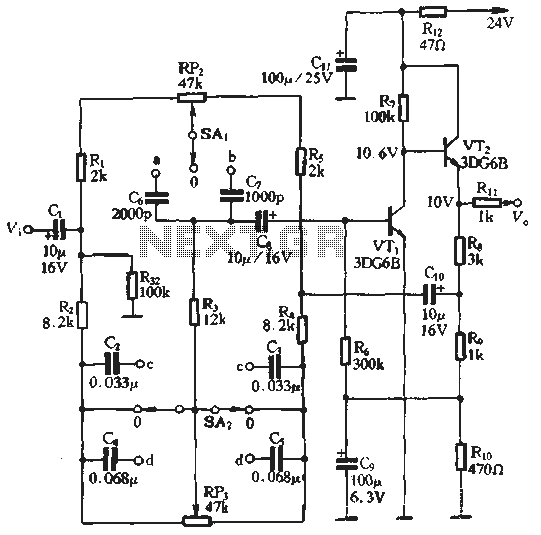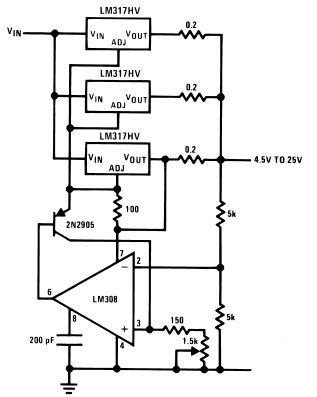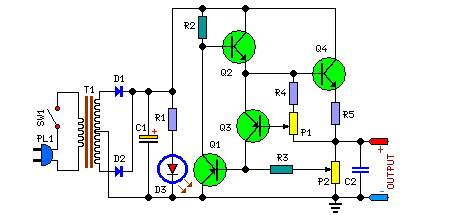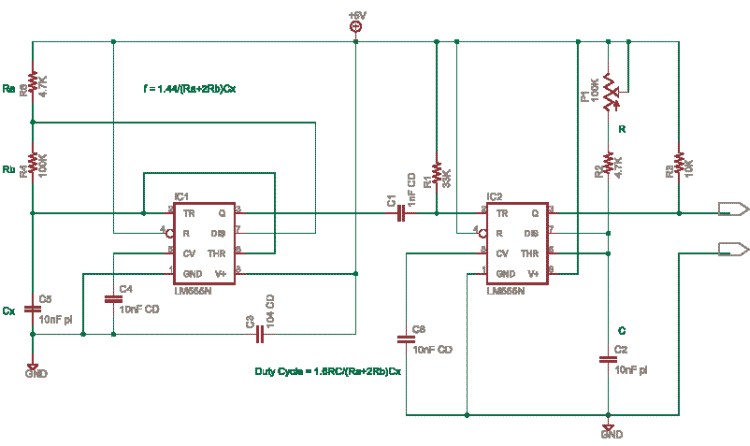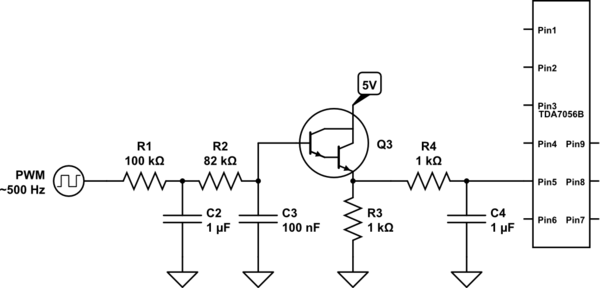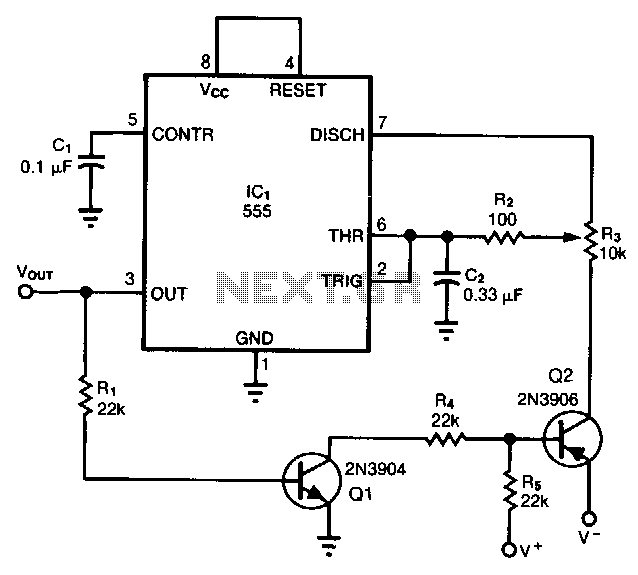
Comparator with variable hysteresis
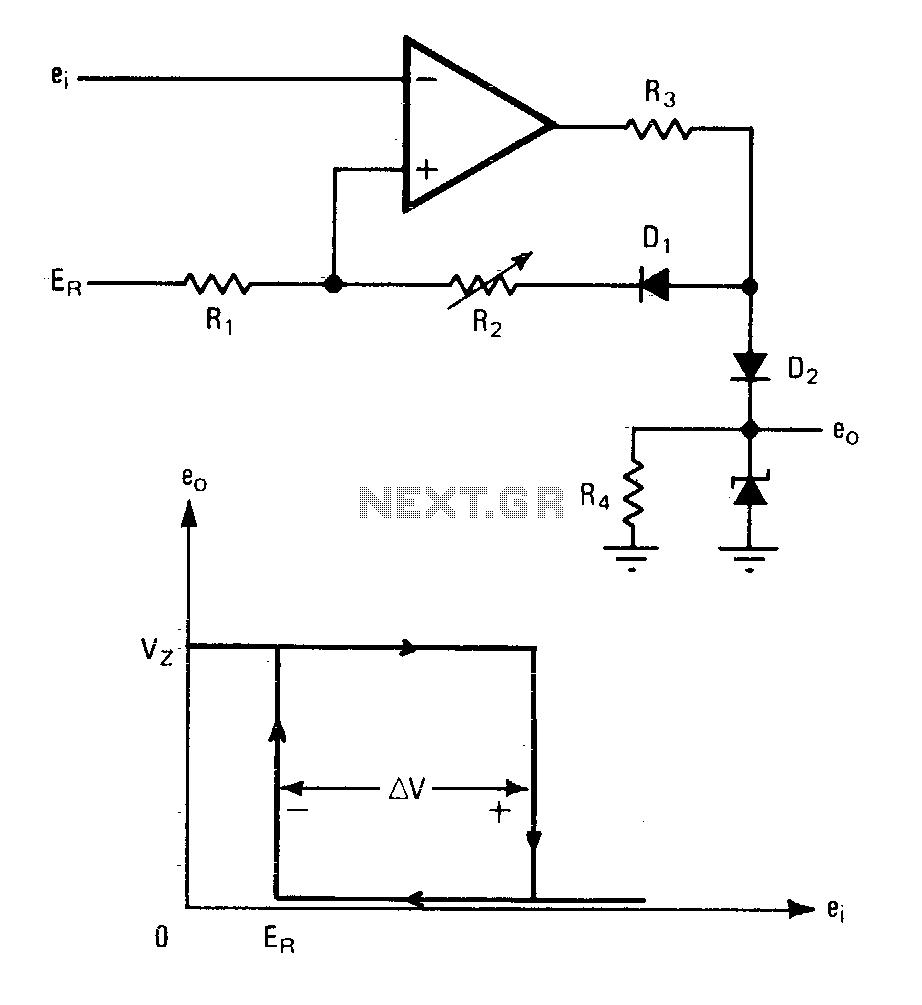
An operational amplifier can be utilized as an effective device for analog comparator applications that necessitate two distinct trip points. The incorporation of a positive feedback network introduces a precise variable hysteresis into the conventional comparator switching action. This feedback creates two comparator trip points centered around the initial trip point or reference point. The voltage difference, ΔV, between the trip points can be modified by adjusting resistor R2. When the output voltage is derived from the zener diode, as illustrated, it alternates between zero and Vz, the zener voltage.
An operational amplifier (op-amp) configured as a comparator is a common approach in analog circuitry for applications requiring threshold detection with hysteresis. The basic configuration involves connecting the op-amp in a non-inverting or inverting mode depending on the desired output behavior. By introducing a positive feedback loop through a resistor network, the comparator can achieve two distinct switching points, enhancing its performance in noisy environments.
The feedback network typically consists of a resistor R1 connected from the output back to the non-inverting input. This configuration allows the output voltage to influence the threshold voltage at the non-inverting terminal, thus creating a hysteresis effect. The addition of resistor R2, which is connected to the reference voltage, allows for fine-tuning of the voltage difference, ΔV, between the upper and lower trip points. The precise adjustment of R2 enables the user to set the desired sensitivity of the comparator, making it adaptable to various signal conditions.
When the output voltage is taken from a zener diode, the circuit exhibits a defined switching characteristic. The zener diode clamps the output voltage to a specific level, Vz, ensuring that when the comparator output is high, it stabilizes at Vz, and when low, it returns to zero. This behavior is particularly useful in applications such as level detection, where the output can indicate whether the input signal has crossed the set thresholds.
Overall, this configuration is beneficial in applications requiring reliable switching behavior and adjustable sensitivity, such as in signal conditioning, level sensing, and control systems. The operational amplifier's versatility, combined with the hysteresis introduced through positive feedback, makes it an indispensable component in various analog electronic designs.An operational amplifier can be used as a convenient device for analog comparator applications that require two different trip points. The addition of a positiverfeedback network introduces a precise variable hysteresis into the usual comparator switching action.
Such feedback develops two comparator trip points centered about the initial trip point or reference point The voltage difference, AV, between the trip points can be adjusted by varying resistor R2. When the output voltage is taken from the zener diode, as shown, it switches between zero and Vz, the zener voltage.
An operational amplifier (op-amp) configured as a comparator is a common approach in analog circuitry for applications requiring threshold detection with hysteresis. The basic configuration involves connecting the op-amp in a non-inverting or inverting mode depending on the desired output behavior. By introducing a positive feedback loop through a resistor network, the comparator can achieve two distinct switching points, enhancing its performance in noisy environments.
The feedback network typically consists of a resistor R1 connected from the output back to the non-inverting input. This configuration allows the output voltage to influence the threshold voltage at the non-inverting terminal, thus creating a hysteresis effect. The addition of resistor R2, which is connected to the reference voltage, allows for fine-tuning of the voltage difference, ΔV, between the upper and lower trip points. The precise adjustment of R2 enables the user to set the desired sensitivity of the comparator, making it adaptable to various signal conditions.
When the output voltage is taken from a zener diode, the circuit exhibits a defined switching characteristic. The zener diode clamps the output voltage to a specific level, Vz, ensuring that when the comparator output is high, it stabilizes at Vz, and when low, it returns to zero. This behavior is particularly useful in applications such as level detection, where the output can indicate whether the input signal has crossed the set thresholds.
Overall, this configuration is beneficial in applications requiring reliable switching behavior and adjustable sensitivity, such as in signal conditioning, level sensing, and control systems. The operational amplifier's versatility, combined with the hysteresis introduced through positive feedback, makes it an indispensable component in various analog electronic designs.An operational amplifier can be used as a convenient device for analog comparator applications that require two different trip points. The addition of a positiverfeedback network introduces a precise variable hysteresis into the usual comparator switching action.
Such feedback develops two comparator trip points centered about the initial trip point or reference point The voltage difference, AV, between the trip points can be adjusted by varying resistor R2. When the output voltage is taken from the zener diode, as shown, it switches between zero and Vz, the zener voltage.
